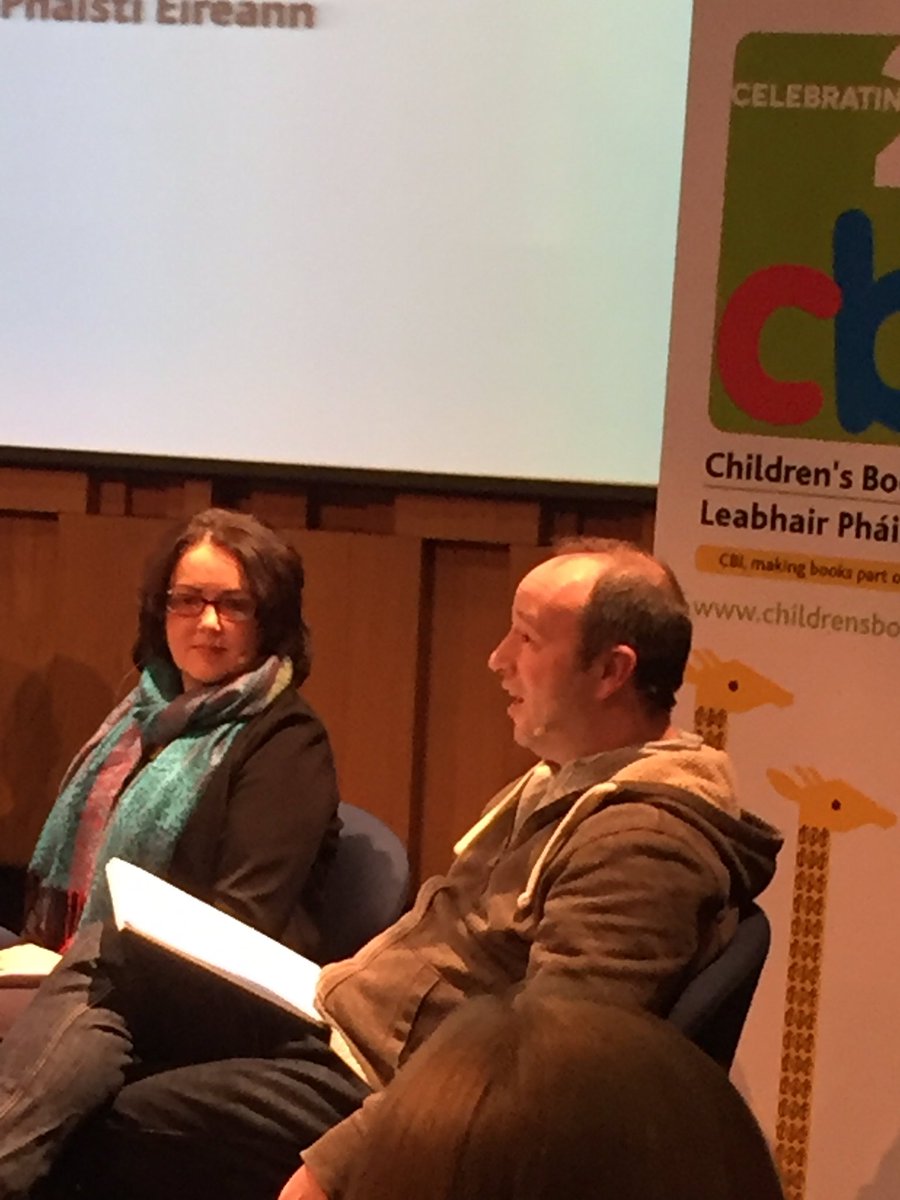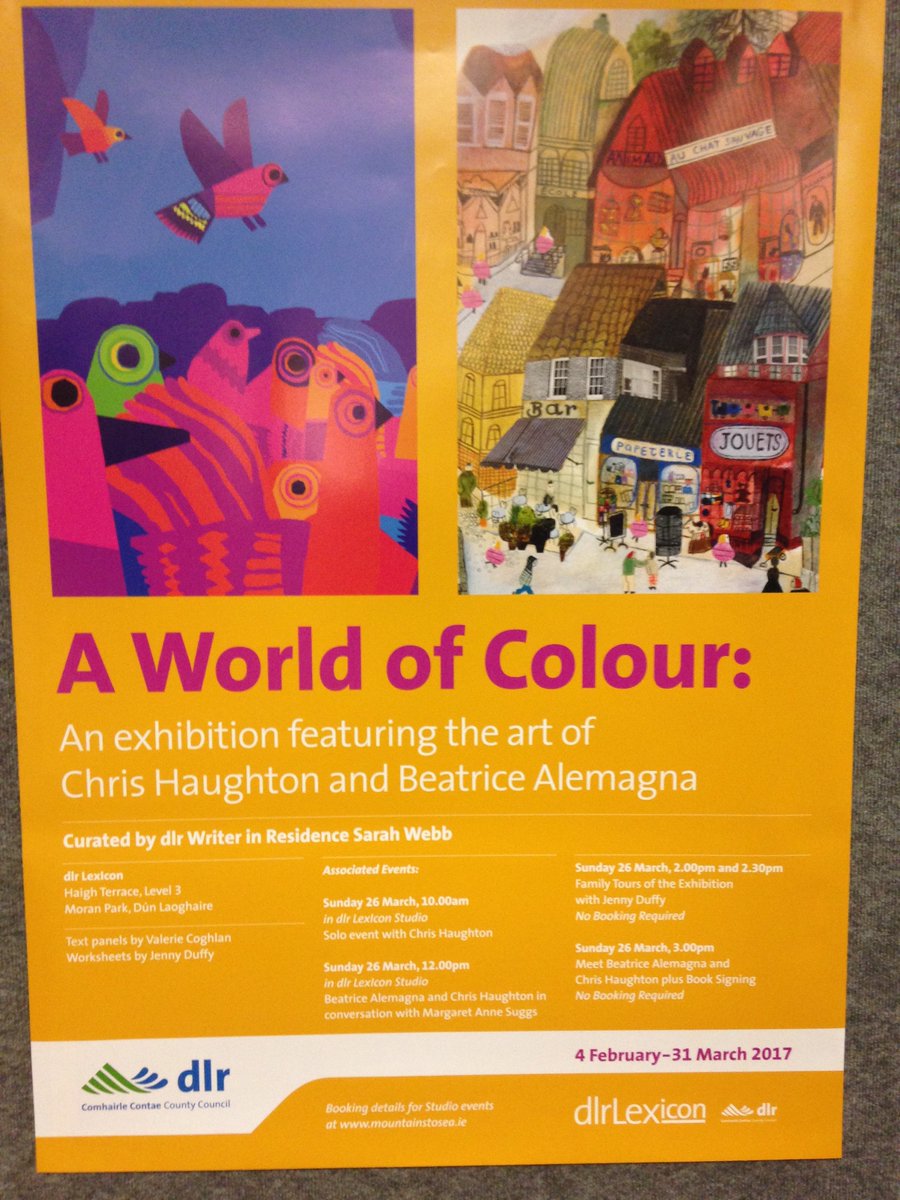2021 is already off to a fantastic start in the world of children’s books with a hugely successful inaugural event in the new series Children’s Books Salon. Curated by author Sarah Webb and bookseller Trish Hennessy of Halfway Up the Stairs, this fortnightly event showcases some of the best authors, illustrators, and all-round children’s books enthusiasts that 2021 has to offer. This week Sarah Webb interviewed Natasha Farrant and Chris Haughton, with presentations from booksellers Trish Hennessy and David O’Callaghan as well.
Natasha Farrant is an author of teenage / young adult novels and, more recently, middle-grade fiction. She is also a literary scout. Her published works include the Diaries of Bluebell Gadsby and the Lydia series, The Children of Castle Rock, her upcoming book The Girl Who Talked to Trees and many more. Her 2020 middle-grade novel Voyage of the Sparrowhawk won the Costa Children’s Book Award, with the judges calling it "a modern classic" and "a book that makes you fall in love with reading".
Natasha spoke about where her inspiration for her stories comes from. In the case of Voyage of the Sparrowhawk it originated from the light-hearted suggestion that she write about her friend’s chihuahua. Natasha talked about her process in creating a unique narrative voice with a light but significant presence in her books. She spoke about the importance of showcasing themes of agency in children’s books, a message Natasha took from the works of Enid Blyton. She expressed how she wanted to write stories about children who are capable of changing the world, referencing the work of child climate change activists such as Greta Thunberg. She concluded her interview with advice for aspiring children’s writers who may be struggling to write creatively in these unusual times: read often (her recommendations being Journey to the River Sea and The Secret Countess both by Eva Ibbotson) and to be kind to yourself while holding yourself to a sense of structure.
Trish Hennessey then presented her top 20 books of 2020, noting that a significant number of books on this list were created by Irish authors and illustrators. It demonstrated the influence that comes from booksellers advocating for and hand-selling their favourite titles, particularly from independent bookshops. Elsetime by Eve McDonnell was mentioned to be their favourite book of the year. The full list can be found on the Halfway Up the Stairs website here.
Chris Haughton was the next guest to be interviewed. With his bold, vibrant, technicolour illustrations and perfect comic timing, Chris Haughton is one of the most popular authors and illustrators working today. His infamous picture books include Goodnight Everyone, Shh, We have a Plan, A Bit Lost, Oh No, George! Don’t Worry Little Crab, and his upcoming book Maybe.
Chris spoke about his creative process when illustrating his picture books, which involves him sitting out in the back garden of his London home, surrounded by nature, ripping up sheets of sugar paper, and making collages that will eventually form his distinctive artistic style. He mentioned that the idea for his upcoming book Maybe appeared around the same time as his 2019 book Don’t Worry Little Crab but emphasised that he wanted to tell a story with a bit more “peril” than his usual books – in a fun and charming manner, of course! Attendees of this event were treated to a sneak peek of Maybe where Chris read through his hilarious story about pushing your limits and lots of monkey-business.
The last guest of the evening was David O’Callaghan, Children’s and Teen Books Buyer of Eason, or as he is better known, The King of Children’s Books. David gave an excellent presentation of all the books to look out for in 2021, from picture books to young adult novels. For picture books, he looks forward to Books Make Good Pets by John Agard and Momoko Abe, The Whale Who Wanted More by Rachel Bright and Jim Field, and Oscar the Hungry Unicorn Eats Easter by Lou Carter and Nikki Dyson. For early readers (5+ years) he comments on the popularity of “Yemo” (Young-Emo) and graphic novels, with new additions to the Isadora Moon and the new Mirabelle series by Harriet Muncaster, the Dogman series by Dav Pilkey, and the Bunny vs Monkey series by Jamie Smart to watch out for. In middle-grade novels (8+ years) David recommends Amari and the Night Brothers by B. B. Alston, Aldrin Adams and the Cheese Nightmares by Paul Howard and Lee Cosgrove. For teen and young adult readers, he is looking forward to the release of What Love Looks Like by Jarlath Gregory and The Supreme Lie by Geraldine McCaughrean. When asked about his favourite YA book of 2020 and most anticipated YA book of 2021, he named Savage Her Reply by Deirdre Sullivan and Ace of Spades by Faridah Abike-Iyimide respectively.
The next Children’s Book Salon is certainly one to look forward to. Details for the next event can be found on the Halfway Up the Stairs website.
With thanks to Ruth Ennis for this log

























